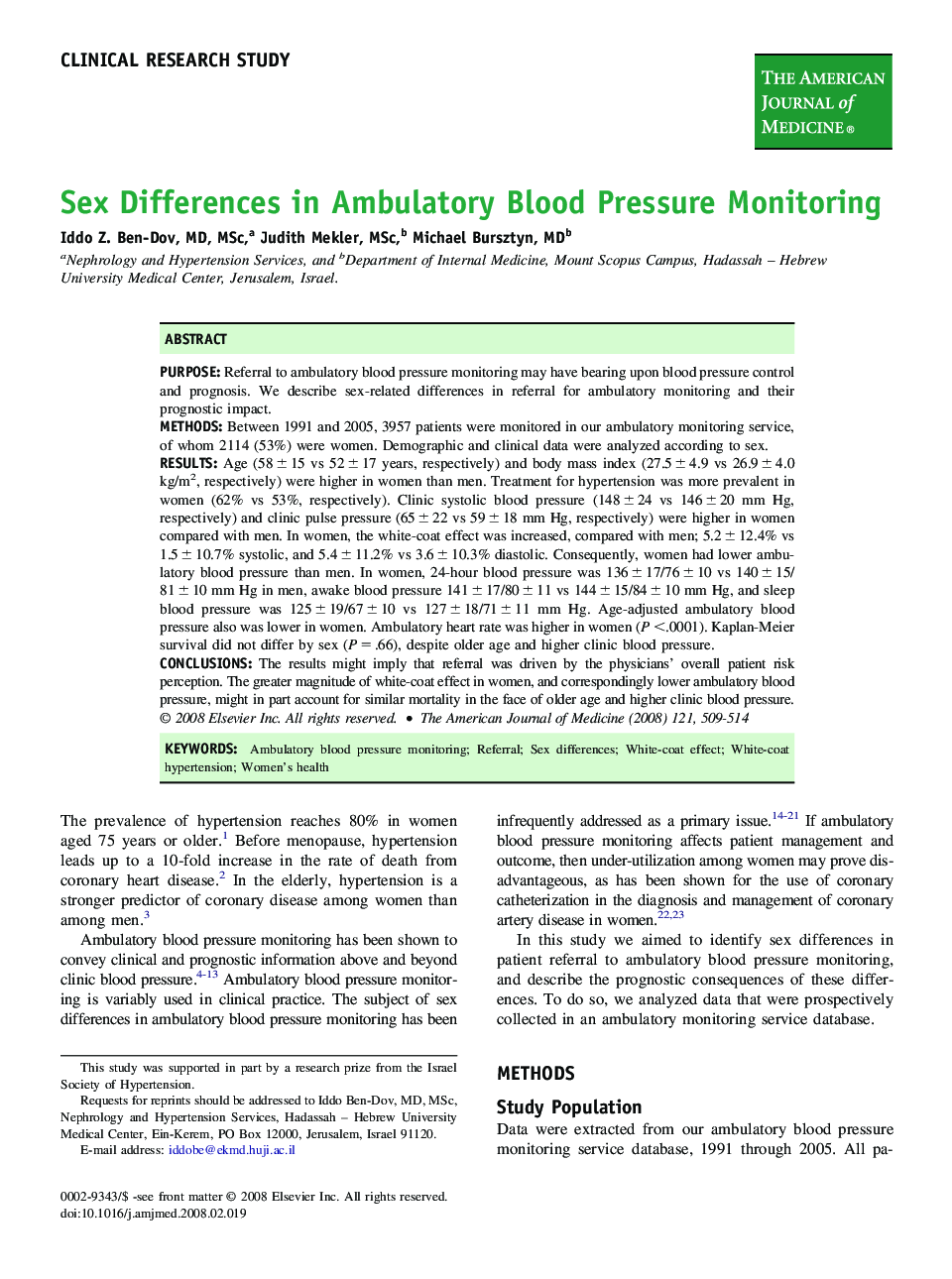| Article ID | Journal | Published Year | Pages | File Type |
|---|---|---|---|---|
| 2717499 | The American Journal of Medicine | 2008 | 6 Pages |
PurposeReferral to ambulatory blood pressure monitoring may have bearing upon blood pressure control and prognosis. We describe sex-related differences in referral for ambulatory monitoring and their prognostic impact.MethodsBetween 1991 and 2005, 3957 patients were monitored in our ambulatory monitoring service, of whom 2114 (53%) were women. Demographic and clinical data were analyzed according to sex.ResultsAge (58 ± 15 vs 52 ± 17 years, respectively) and body mass index (27.5 ± 4.9 vs 26.9 ± 4.0 kg/m2, respectively) were higher in women than men. Treatment for hypertension was more prevalent in women (62% vs 53%, respectively). Clinic systolic blood pressure (148 ± 24 vs 146 ± 20 mm Hg, respectively) and clinic pulse pressure (65 ± 22 vs 59 ± 18 mm Hg, respectively) were higher in women compared with men. In women, the white-coat effect was increased, compared with men; 5.2 ± 12.4% vs 1.5 ± 10.7% systolic, and 5.4 ± 11.2% vs 3.6 ± 10.3% diastolic. Consequently, women had lower ambulatory blood pressure than men. In women, 24-hour blood pressure was 136 ± 17/76 ± 10 vs 140 ± 15/81 ± 10 mm Hg in men, awake blood pressure 141 ± 17/80 ± 11 vs 144 ± 15/84 ± 10 mm Hg, and sleep blood pressure was 125 ± 19/67 ± 10 vs 127 ± 18/71 ± 11 mm Hg. Age-adjusted ambulatory blood pressure also was lower in women. Ambulatory heart rate was higher in women (P <.0001). Kaplan-Meier survival did not differ by sex (P = .66), despite older age and higher clinic blood pressure.ConclusionsThe results might imply that referral was driven by the physicians' overall patient risk perception. The greater magnitude of white-coat effect in women, and correspondingly lower ambulatory blood pressure, might in part account for similar mortality in the face of older age and higher clinic blood pressure.
